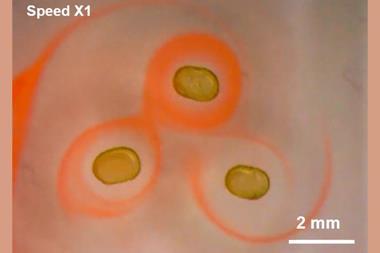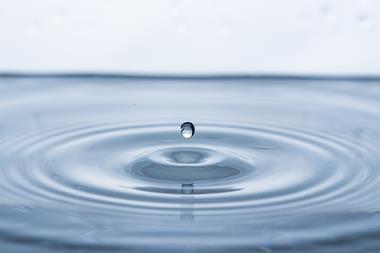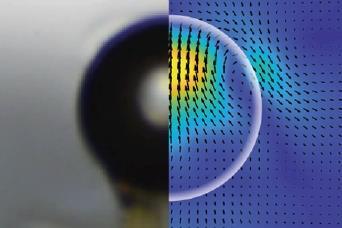Defying gravity and without apparent energy input, droplets race up vertical walls, travel in circles or even roll upside down – all thanks to a superamphiphobic surface. The material can be programmed to precisely control droplets’ movement, which could find applications in microfluidics and water harvesting.
Droplets placed on superamphiphobic surfaces, repelling both water and oil, move around randomly and don’t travel very far, which isn’t ideal for manipulating fluids in applications like harvesting water. Some materials with gradual chemical modifications allow directed droplet transport, but they are difficult to make.
A team of researchers from China and Germany has now created a material that gets droplets to race along a pre-programmed path at unprecedented speeds – 10 times higher than drops propelled by the Leidenfrost effect. Various liquids, including water, blood, glycerol and aniline, can be made to travel in circles, along flexible surfaces, up vertical slopes and even upside down.
The superamphiphobic surface is made from fluorinated porous silicon dioxide. It is programmed simply by dripping water onto its surface from increasing heights. Although the molecular mechanism is still under debate, the researchers think the water drops create negatively charged silicon oxide defects on the surface. The resulting charge density gradient is what propels and directs droplets.
By alternating patches with and without a charge gradient, the researchers can get droplets to travel distances almost 100 times larger than its own diameter. The team even made a cargo-carrying device out of a plastic sheet balanced on four droplet wheels, which moves on the superamphiphobic surface without any additional energy input.
References
Q Sun et al, Nat. Mater., 2019, DOI: 10.1038/s41563-019-0440-2

























No comments yet